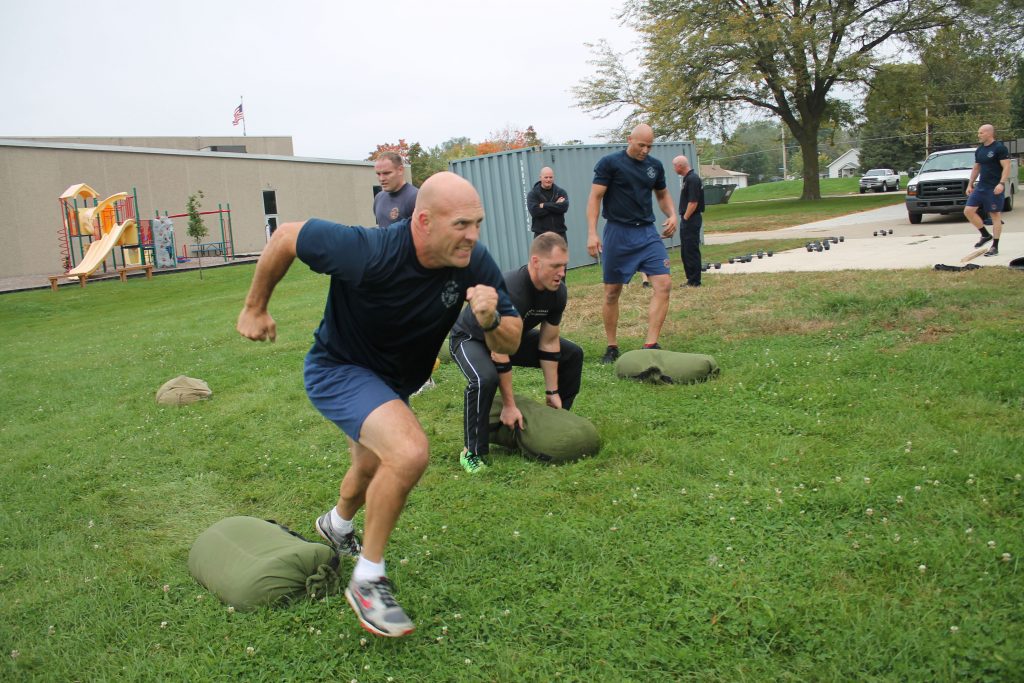
We asked our community to weigh in on the fitness standards for firefighters. We received some great feedback, including this insightful response. We felt that this information was so valuable that we decided to share it with its own post.
Rob,
I just finished reading your most recent Q/A and also recently responded to an article you posted on Facebook regarding firefighter fitness assessments. I’m a big fan of your programming and I’m looking forward to your fire rescue athlete programming that is in the pipeline. I just wanted to offer some insight specifically from a major urban city firefighter perspective. Specifically regarding job tasks.
In NYC Ems is a separate career field but some fire companies perform “first responder duties” arriving on scene first and stabilizing the pt. until an ambulance arrives. From their our Ems duties end. Now some fire companies are busier than others and Ems first response makes up a large portion of our duties. Before I moved over to special operations in NYC I spend almost 5 years in one of the busiest engine companies and then one of the busiest ladder companies in NYC. Engine 290 averages almost 6000 runs per year. 2500 being Ems. The rest being structural responses (now not all of them are working fires) BUT the members get off the rig for each one of those 3500 runs per year in full firefighting Equipment. They then proceed to their position on the foreground or in the building based on our SOP’s. Our area consisted of mixed occupancies from 2 story private dwellings, 8 story apt buildings, to 22 story urban housing developments. Also in NYC, our procedures dictate if the apt reported is at or below the 7th floor we must walk up with all our equipment. Otherwise, we may take the elevator to an area two floors below the reported fire. (If the elevator works, in NYC they are notorious for not working)
A year ago we lost a firefighter on the 17th floor of a hi-rise building. With Elevator issues the special operations firemen had to walk up from the lobby and then get to 17 and search for and remove a downed firefighter saturated in water, from a cluttered blacked out apt.
We have walked 22 stories during a non-fire emergency for someone stuck in an elevator in an apt building.
In NYC “the burden of constant fitness” as you put it so well, is ever-present. we climb a lot of stairs wearing full bunker gear with scba and various tools.
My Previous Ladder company did appx 4,000 runs none of them being EMS related (only engines do EMS in NYC) and all of them requiring us to get off the rig with our full complement of tools. for things like gas leaks, carbon monoxide emergencies, car accidents, stuck elevators, Compactor fires etc
Then there are the working fires where our members must do all of the above as well as tasks such as climbing fences to gain access to the rear of a building. Climbing stairs or ladders to access the roof. Operating on-air dragging hoses into buildings, searching on hands and knees and extensive overhaul using halligans and 6-foot hooks to open up doors, windows, ceilings, and walls.
Try fitting a workout in during a tour averaging 15 “runs”, they can’t be drawn out as they are often interrupted. While we typically do 24 he shifts. Our schedule also consists of 2 9 hr day tours 48 off followed by 2 15hr night tours 72hrs off. We do mutuals with each other for 24 hr tours averaging appx 3-4 days off
Please reference the photos below they are accurate with the exception of them not taking into account the new personal escape system we carry and the fact that the roof man does not generally carry the saw and the rescue rope. It is usually one or the other.
Sorry for the drawn out email but I wanted to offer our perspective for your programming research. I think you will find similar operational environments for most other major metropolitan fire departments.
Hope this helps, thanks for your time and effort to make us all better!
FDNY Squad Co. 1
STAY UPDATED
Sign-up for our BETA newsletter. Training tips, research updates, videos and articles - and we’ll never sell your info.

